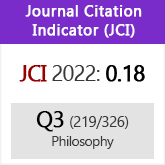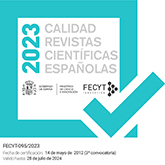La biología sintética en el panorama de las patentes biotecnológicas
DOI:
https://doi.org/10.3989/isegoria.2016.055.11Palabras clave:
biología sintética, patentes, propiedad industrial, biotecnología, commonsResumen
Los pretendidos efectos positivos del actual sistema de patentes en la investigación biotecnológica han sido ampliamente cuestionados. En el marco de esta crítica, se discute aquí uno de los cimientos del modelo. La tesis de la indispensabilidad de las patentes es examinada a través de tres de sus presupuestos: el acceso a la información, el acceso y uso de las invenciones y el incremento de la creatividad y de la investigación que se suponen garantizados a través de las biopatentes. Aplicado a la biología sintética, este enfoque revela que, junto a nuevas técnicas y prometedores productos potenciales, esta disciplina brinda igualmente muestra de tal problemática. Sin embargo, ofrece también una nueva visión de la propiedad industrial y de sus efectos en la investigación, basada en una concepción diferente del commons y de sus relaciones con la propiedad privada sobre los bienes inmateriales en la economía del conocimiento.
Descargas
Citas
AA. VV., 2009, Who Owns Science? The Manchester Manifesto, Manchester, Institute for Science Ethics and Innovation, University of Manchester.
Amabile, T. M., 1998, "How to kill creativity", Harvard Business Review, September-October, 77-87.
Andersen, B., 2004, "If 'intellectual property rights' is the answer, what is the question? Revisiting the patent controversies", Economics of innovation and new technology, 13, 5, 417-442. https://doi.org/10.1080/1043859042000188692
Baer, M., Oldham, G. R. y Cummings, A., 2003, "Rewarding creativity: when does it really matter?", The Leadership Quarterly, 14, 4, 569-586. https://doi.org/10.1016/S1048-9843(03)00052-3
Benkler, Y., 2004, "Intellectual property: Commons-based strategies and the problems of patents", Science, 305, 5687, 24/08/2004, 1110-1111.
Bergel, S. D., 2010, "La patentabilidad de los seres vivos (a 30 a-os de Chakrabarty)", La Ley, N° 58, (A-o LXXIV), tomo 2010-B, 1053-.
Bergel, S. D., 2014, "Investigación científica y patentes: análisis ético-jurídico de sus relaciones", Revista Bioética, 22, 3, 416-426. https://doi.org/10.1590/1983-80422014223023
Bernardo Álvarez, M. A., 2014, "Impacto de la biología sintética sobre el derecho de patentes a la luz de la jurisprudencia europea", Revista de Derecho y Genoma Humano, 41, 123-142.
Bessen, J. y Meurer, M. J., 2008, Patent failure: How judges, bureaucrats, and lawyers put innovators at risk, Princeton, Princeton University Press.
Birch, K., 2013, "The Political Economy of Technoscience: An Emerging Research Agenda", Spontaneous Generations: A Journal for the History and Philosophy of Science, 7, 1, 49-61.
Bollier, D., 2011, "The growth of the commons paradigm", en Hess, C. y Ostrom, E. (eds.), Understanding knowledge as a commons, Massachusetts, MIT Press (disponible en http://dlc.dlib.indiana.edu/dlc/ bitstream/ handle/10535/4975/Growthof-CommonsParadigm.pdf, f. cons. 20/12/2015).
Burk, D. L., 1991, "Biotechnology and Patent Law: Fitting Innovation to the Procrustean Bed", Rutgers Computer & Technology Law Journal, 17, 1, 24-84.
Burrone, E., 2006, "Patents at the Core: the Biotech Business", paper, WIPO World Intellectual Property Organization Website, http://www.wipo.int/sme/en/documents/patents_biotech_fulltext.htm, f. cons. 20/12/2015.
Calvert, J., 2012, "Ownership and sharing in synthetic biology: A 'diverse ecology' of the open and the proprietary?", BioSocieties, 7, 2, 169-187. https://doi.org/10.1057/biosoc.2012.3
Committee on intellectual property rights in genomic and protein research and innovation, 2006, Reaping the Benefits of Genomic and Proteomic Research: Intellectual Property Rights, Innovation and Public Health, Washington, D. C., U. S. National Research Council of the National Academies. The National Academies Press.
Conley, J. M. y Makowski, R., 2004, "Rethinking the product of nature doctrine as a barrier to biotechnology patents", Information & Communications Technology Law, 13, 1, 3-40. https://doi.org/10.1080/1360083042000190625
De Miguel Beriain, I. 2014. "Synthetic Biology and IP Rights: In Defence of the Patent System", en De Miguel Beriain, I. y Romeo Casabona, C. M. (eds.), Synbio and Human Health, Dordrecht, Springer, 201-209. https://doi.org/10.1007/978-94-017-9196-0_13
Deplazes, A. y Huppenbauer, M., 2009, "Synthetic organisms and living machines", Systems and synthetic biology, 3, 1, 55-63. https://doi.org/10.1007/s11693-009-9029-4 PMid:19816800 PMCid:PMC2759422
Etc Group, 2007, Extreme genetic engineering. An introduction to synthetic biology, s/l. http://www.etcgroup.org/sites/ www.etcgroup.org/files/publication/602/01/synbioreportweb.pdf, f. cons. 20/12/2015.
European Parliament, European Parliament Resolution on Patents for Biotechnological Inventions, 2005, 25th October 2005 [P6_TA(2005)0407].
Feldman, R. y Price, W. N., 2014, "Patent Trolling—Why Bio & Pharmaceuticals Are at Risk", University of California (Legal Studies Research Paper Series ), Hastings Research Paper No. 93, http://papers.ssrn.com/sol3/ papers.cfm?abstract_id=2395987, f. cons. 20/12/2015.
Gibson, J., 2009, Intellectual property, medicine and health: current debates, Burlington, Ashgate Publishing.
Golden, J. M., 2001, "Biotechnology, technology policy, and patentability: natural products and invention in the American system", Emory Law Journal, 50, 101-192.
Hardin, G., 1968, "The Tragedy of the commons", Science, 162, 3859, 1243-1248. https://doi.org/10.1126/science.162.3859.1243
Heller, M. A. y Eisenberg, R. S., 1998, "Can patents deter innovation? The anticommons in biomedical research", Science, 280, 5364, 698-701. https://doi.org/10.1126/science.280.5364.698 PMid:9563938
Hilgartner, S., 2012, "Novel constitutions? New regimes of openness in synthetic biology", Biosocieties, 7, 2, 188-207. https://doi.org/10.1057/biosoc.2012.5
Hope, J., 2009, Biobazaar: The open source revolution and biotechnology, Cambridge, Harvard University Press.
Huys, I., Matthijs, G. y Van Overwalle, G. 2012., "The fate and future of patents on human genes and genetic diagnostic methods", Nature Review Genetics, 13, 6, 441-448. https://doi.org/10.1038/nrg3255 PMid:22596320
Ishibashi, I. y Matsumura, T., 2006, "R&D competition between public and private sectors", European Economic Review, 50, 6, 1347-1366. https://doi.org/10.1016/j.euroecorev.2005.04.002
Johnson, E. E., 2012, "Intellectual Property and the Incentive Fallacy", Florida State University Law Review, 39, Spring, 623-679.
Jonas, H., 1997, Técnica, Medicina y Ética. Sobre la práctica del principio de responsabilidad (traducción de Fortea Gil, C. del original Technik, Medizin und Ethik. Zur Praxis des Prinzips Verantucortung, publicado por Insel Verlag, Francfort del Meno), 1985, Barcelona, Paidós.
Kahl, L. J. y Endy, D., 2013, "A survey of enabling technologies in synthetic biology", Journal of Biological Engineering, 7, 13, 1-19. https://doi.org/10.1186/1754-1611-7-13
Kumar, S. y Rai, A., 2007, "Frontiers of Intellectual Property: Synthetic Biology: The Intellectual Property Puzzle", Texas Law Review, 85, 7, 1745-1768.
Lovgren, S., 2005. "One-fifth of human genes have been patented, study reveals", National Geographic News, October 13, 2005. http://news.nationalgeographic. com/news/2005/10/1013_051013_gene_patent.html f. cons. 20/12/2015.
Mackey, T. M., 2009, "Nanobiotechnology, synthetic biology, and RNAi: Patent portfolios for maximal near-term commercialization and commons for maximal long-term medical gain", Marquette Intellectual Property Law Review, 13, 1, 125-205.
Mandel, G. N., 2011, "To promote the creative process: Intellectual property law and the psychology of creativity", Notre Dame Law Review, 86, 5, 1999-2026.
Mueller, J. M., 2001, "No Dilettante affair: Rethinking the experimental use exception to patent infringement for biomedical research tools", Washington Law Review, 76, 1, 1-65.
Munzer, S. R., 2013, "Research Biobanks Meet Synthetic Biology: Autonomy and Ownership", en: Pascuzzi, G., Izzo, H. y Macilotti, M. (eds.), Comparative Issues in the Governance of Research Biobanks: Property, Privacy and the Role of Technology, Dordrecht, Springer, 11-39. https://doi.org/10.1007/978-3-642-33116-9_2
Nature (editorial), 2013, "The patent bargain. An open-source patent database highlights the need for more transparency worldwide", Nature, 504, 12/12/2013, 187-188.
Nuffield Council on Bioethics, 2002, The Ethics of Patenting DNA: A Discussion Paper, London, Nuffield Council on Bioethics. OECD, Organisation for economic cooperation and development, 2006, Guidelines for the Licensing of Genetic Inventions, s/l, http://www.oecd.org/sti/biotech/36198812.pdf, f. cons. 20/12/2015.
Oldham, P., Hall, S. y Forero, O., 2013, "Biological Diversity in the Patent System", Plos One, 8, 11, 1-16. https://doi.org/10.1371/journal.pone.0078737 PMid:24265714 PMCid:PMC3827099
Overwalle, G. V. (ed.), 2009, Gene patents and collaborative licensing models: patent pools, clearinghouses, open source models, and liability regimes, Cambridge, Cambridge University Press.
Oye, K. A. y Wellhausen, R., 2009, "The Intellectual Commons and Property in Synthetic Biology", en Schmidt, M., Kelle, A., Gangulimitra, A. y Devriend, H. (eds.), Synthetic Biology: The Technoscience and Its Societal Consequences, Dordrecht, Springer, 121-140. https://doi.org/10.1007/978-90-481-2678-1_8
Palombi, L., 2009, Gene cartels: biotech patents in the age of free trade, Cheltenham, Edward Elgar Publishing. https://doi.org/10.4337/9781848447431
Pottage, A., 2007, "The socio-legal implications of the new biotechnologies", Annual Review of Law and Social Science, 3, 321-344. https://doi.org/10.1146/annurev.lawsocsci.3.081806.112856
Powell, W. W. y Snellman, K., 2004, "The knowledge economy", Annual Review of Sociology, 30, 199-220. https://doi.org/10.1146/annurev.soc.29.010202.100037
President's council of economic advisers, national economic council, office of science and technology policy, 2013. Patent assertion and U.S. innovation, Washington, U.S. White House (Executive Office of the President).
Rai, A. y Boyle, J., 2007, "Synthetic biology: caught between property rights, the public domain, and the commons", PLoS Biology, 5, 3, 389-393. https://doi.org/10.1371/journal.pbio.0050058 PMid:17355173 PMCid:PMC1821064
Regenberg, A. y Mathews, D. J., 2011, "Promoting justice in stem cell intellectual property", Regenerative Medicine, 6, (6 Suppl.), 79-84. https://doi.org/10.2217/rme.11.68 PMid:21999266
Rhoten, D. y Powell, W. W., 2007, "The frontiers of intellectual property: Expanded protection versus new models of open science", Annual Review of Law and Social Science, 3, 345-373. https://doi.org/10.1146/annurev.lawsocsci.3.081806.112900
Rutz, B., 2009, "Synthetic biology and patents. A European perspective", European Molecular Biology Organization Reports, 10, S14-S17. https://doi.org/10.1038/embor.2009.131
Rutz, B., 2010, "Patentability of synthetic biology inventions in Europe", Biotechnology Journal, 5, 1, 11-13. https://doi.org/10.1002/biot.200900260 PMid:20069577
Shiva, V., 1997, Biopiracy: The plunder of nature and knowledge, Cambridge, South End Press. PMid:12348003
Strandburg, K. J., 2004, "What Does the Public Get? Experimental Use and the Patent Bargain", Wisconsin Law Review, 81-153.
Tait, J., 2009, "Governing Synthetic Biology: Processes and Outcomes", en Schmidt, M., Kelle, A., Gangulimitra, A. y Devriend, H. (eds.), Synthetic Biology: The Technoscience and Its Societal Consequences, Dordrecht, Springer, 141-154. https://doi.org/10.1007/978-90-481-2678-1_9
Thumm, N., 2003, Research and Patenting in Biotechnology. A Survey in Switzerland, Publication No 1 (12.03), Bern, Swiss Federal Institute of Intellectual Property. Thurow, L. C., 1997, "Needed: a new system of intellectual property rights", Harvard Business Review, 75 (September-October), 94-107.
Tyfield, D., 2008, "Enabling TRIPs: The pharma–biotech–university patent coalition", Review of International Political Economy, 15, 4, 535-566. https://doi.org/10.1080/09692290802260555
U. S. Presidential commission for the study of bioethical issues, 2010, New directions: The Ethics of Synthetic Biology and Emerging Technologies, Washington D.C, U. S. Presidential Commission for the study of Bioethical Issues.
Van Den Belt, H., 2013, "Synthetic biology, patenting, health and global justice" Systems and synthetic biology, 7, 3, 87-98. https://doi.org/10.1007/s11693-012-9098-7 PMid:24432146 PMCid:PMC3740100
Van Den Belt, H., 2014, "Synthetic biology and global health in the age of intellectual property", en De Miguel Beriain, I. y Casabona, C. M. R. (eds.), Synbio and Human Health, Dordrecht, Springer, 19-43. https://doi.org/10.1007/978-94-017-9196-0_3
Van Doren, D., Koenigstein, S. y Reiss, T., 2013, "The development of synthetic biology: a patent analysis", Systems and synthetic biology, 7, 4, 209-20. https://doi.org/10.1007/s11693-013-9121-7 PMid:24255694 PMCid:PMC3824817
Verbeure, B., 2009, "Patent pooling for gene-based diagnostic testing. Conceptual framework", en Van Overwalle, G. (ed.), Gene patents and collaborative licensing models: Patent pools, clearinghouse, open source models and liability regimes, Cambridge, Cambridge University Press, 1-32. https://doi.org/10.1017/CBO9780511581182.003
Descargas
Publicado
Cómo citar
Número
Sección
Licencia
Derechos de autor 2016 Consejo Superior de Investigaciones Científicas (CSIC)

Esta obra está bajo una licencia internacional Creative Commons Atribución 4.0.
© CSIC. Los originales publicados en las ediciones impresa y electrónica de esta Revista son propiedad del Consejo Superior de Investigaciones Científicas, siendo necesario citar la procedencia en cualquier reproducción parcial o total.Salvo indicación contraria, todos los contenidos de la edición electrónica se distribuyen bajo una licencia de uso y distribución “Creative Commons Reconocimiento 4.0 Internacional ” (CC BY 4.0). Puede consultar desde aquí la versión informativa y el texto legal de la licencia. Esta circunstancia ha de hacerse constar expresamente de esta forma cuando sea necesario.
No se autoriza el depósito en repositorios, páginas web personales o similares de cualquier otra versión distinta a la publicada por el editor.














